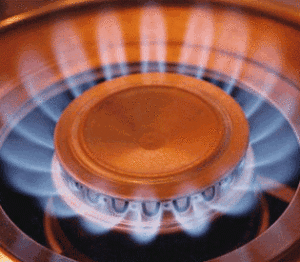 Natural gas fell on Thursday before a government report likely shows a larger-than-average weekly build in US natural gas stockpiles, while overall typically mild Spring weather dominates the country.
Natural gas fell on Thursday before a government report likely shows a larger-than-average weekly build in US natural gas stockpiles, while overall typically mild Spring weather dominates the country.
Natural gas for delivery in May traded 1.23% lower at $2.578 per million British thermal units at 8:13 GMT, shifting in a daily range of $2.609 – $2.570. The contract rose 3.16% yesterday to $2.610, extending gains from the previous session.
The Energy Information Administration will probably report a larger-than-average inventory build today, around +53 to +55 bcf, due to last week’s widespread mild conditions. The five-year average inventory gain for the week ended April 10th is +35 billion cubic feet, while supplies rose by 22 bcf during the same week a year earlier. A reading above +60 bcf would be considered quite bearish, and below +50 bcf – quite bearish.
The energy source drew support yesterday amid expectations for a slightly stronger heating demand next week due to a cooler weather system that will impact the Midwest mainly. However, any significant moves to the upside are expected to be capped as the US remains engulfed by overall mild weather, which will be reflected in the inventory builds to come.
According to NatGasWeather.com, natural gas demand remains low compared to normal, but will become moderate next week.
The southeastern US will see scattered showers and thunderstorms over the next few days as a weather system tracks through, preventing readings from becoming too hot. As the week progresses, mild temperatures peaking in the 60s and lower 70s will once again establish over the Great Lakes and the Ohio Valley.
Heating demand during the next two weeks will be determined mainly by two Spring storms. The first one, currently passing through the Rockies, will push into the south-central US on Friday and Saturday. However, it will fail to tap any truly cold Canadian air and will only bring a brief cooling to the Great Lakes and East. The Southwest and California will see highs reach the 80s and 90s the next few days, NatGasWeather.com reported.
A more significant storm is expected to develop late this weekend and last for most of the next workweek, impacting much of the central and eastern regions of the country with heavy showers. It will send overnight lows across the Midwest into the 20s and 30s, but will also spill cooler air into the South, limiting cooling demand. Meanwhile, high pressure will continue to dominate the West Coast and far southern US, keeping readings near normal or somewhat warmer.
Next weeks inventory report, due out on April 23rd, will likely reflect a larger-than-average inventory build as well as natural gas demand during the current week remains low. The five-year average inventory gain for the week ended April 17th is +46 billion cubic feet, while stockpiles grew by 45 bcf during the comparable period a year earlier.
Last Thursdays report showed that US natural gas stockpiles rose by 15 billion cubic feet in the week ended April 3rd, exceeding analysts’ estimates for a 10-11-bcf inventory jump. Total gas held in US storage hubs amounted to 1.476 trillion cubic feet, narrowing a deficit to the five-year average of 1.649 trillion to 10.5% from 11.5% a week earlier. Supplies were 78.9% above year-ago stockpiles levels.
Temperatures
According to AccuWeather.com, readings in New York will peak at 74 degrees Fahrenheit on April 19th, 11 above usual, before easing to the upper 50s and lower 60s for the rest of the month. Highs in Chicago will range between 63 and 69 degrees through April 20th, compared to the average 60-61, followed by a cooling to the low and mid 50s over the following seven days.
Down South, Houston will see readings max out at 78-82 over the next ten days, compared to the average 79-80. On the West Coast, the high in Los Angeles today will be 84 degrees, 11 above usual, before dropping into the upper 60s to mid 70s through April 26th.
Pivot points
According to Binary Tribune’s daily analysis, May natural gas futures’ central pivot point stands at $2.575. In case the contract penetrates the first resistance level at $2.660 per million British thermal units, it will encounter next resistance at $2.709. If breached, upside movement may attempt to advance to $2.794 per mBtu.
If the energy source drops below its S1 level at $2.526 per mBtu, it will next see support at $2.441. In case the second key support zone is breached, the power-station fuel’s downward movement may extend to $2.392 per mBtu.
In weekly terms, the central pivot point is at $2.575. The three key resistance levels are as follows: R1 – $2.645, R2 – $2.780, R3 – $2.850. The three key support levels are: S1 – $2.440, S2 – $2.370, S3 – $2.235.





